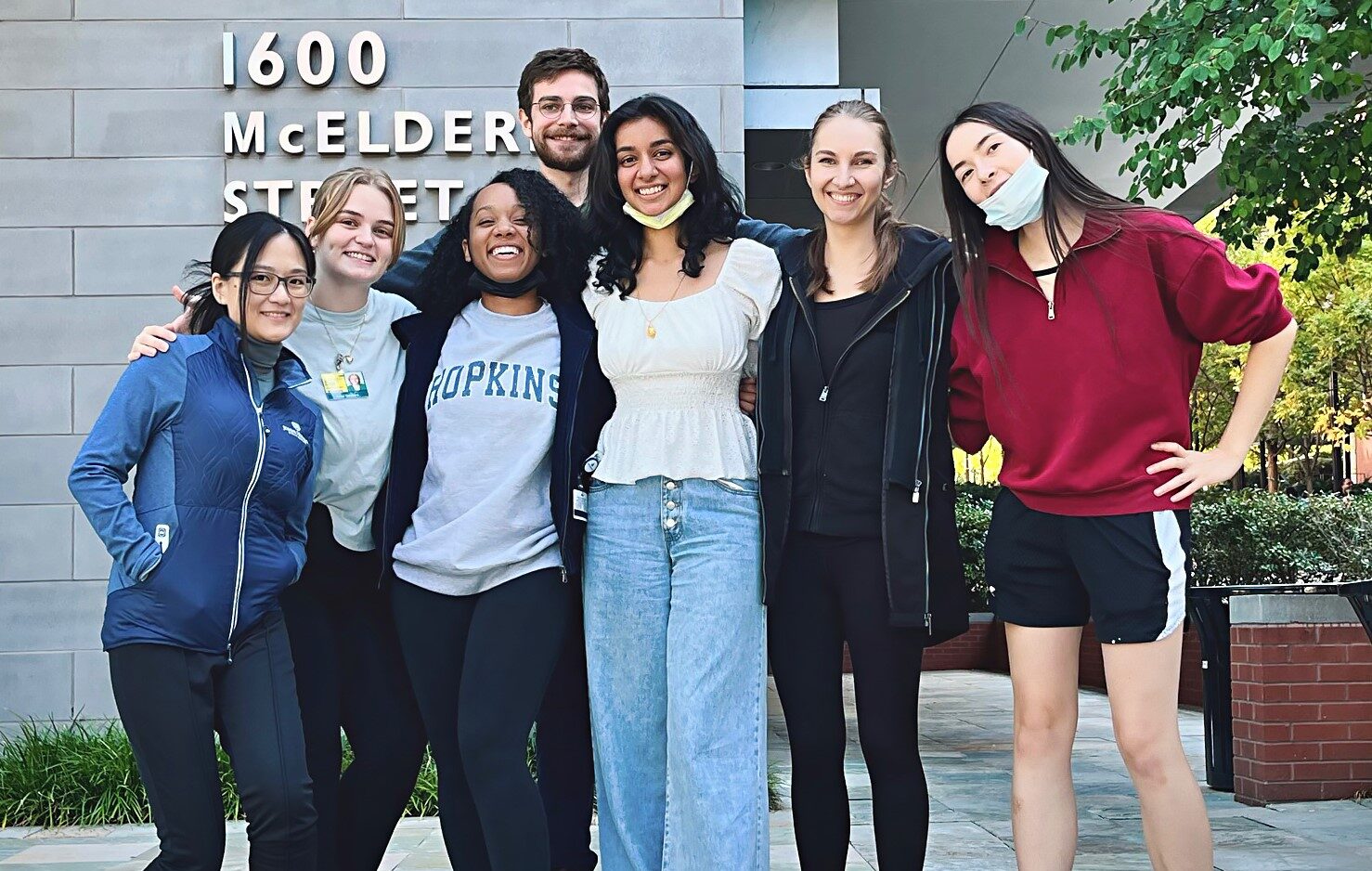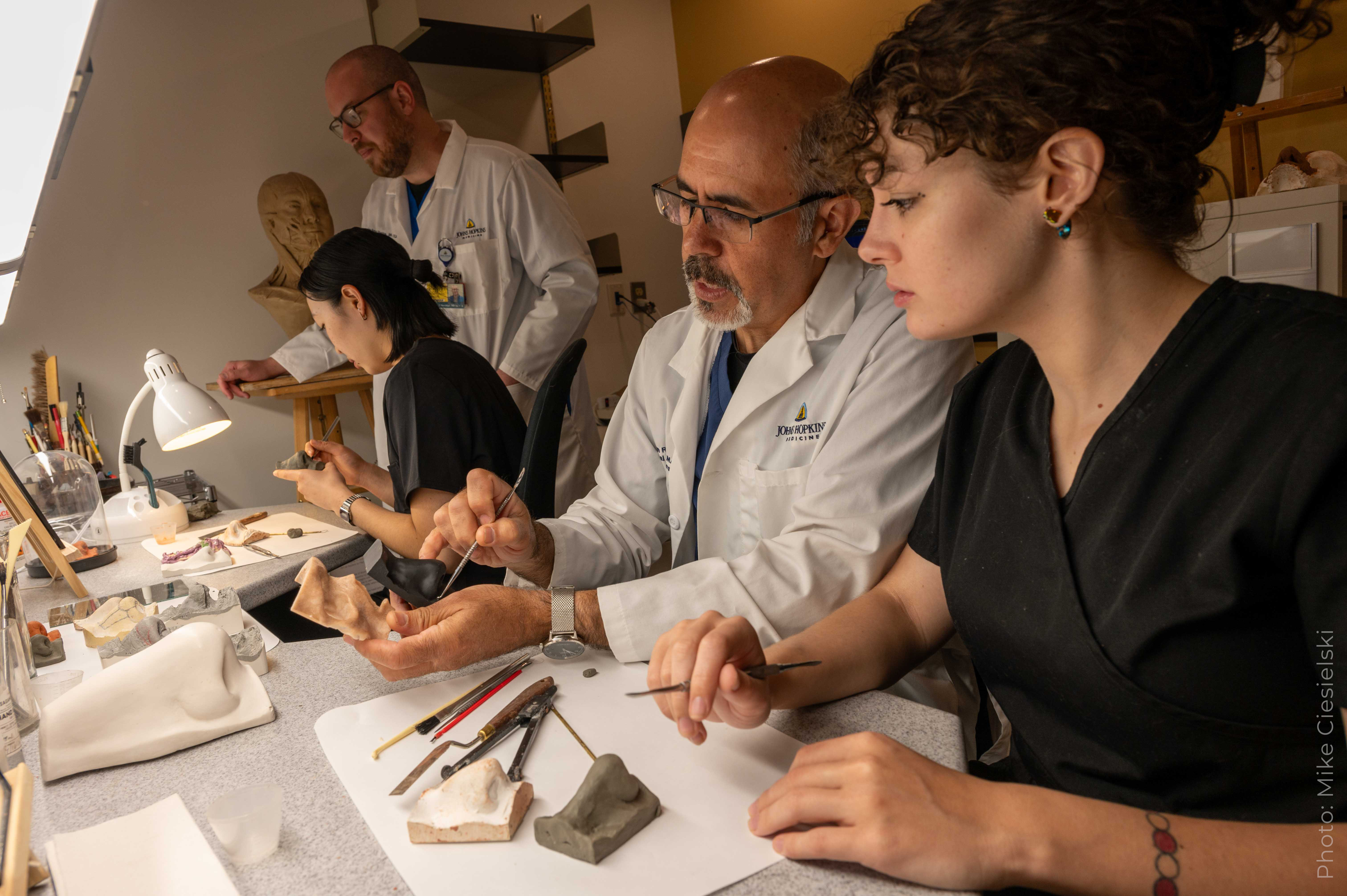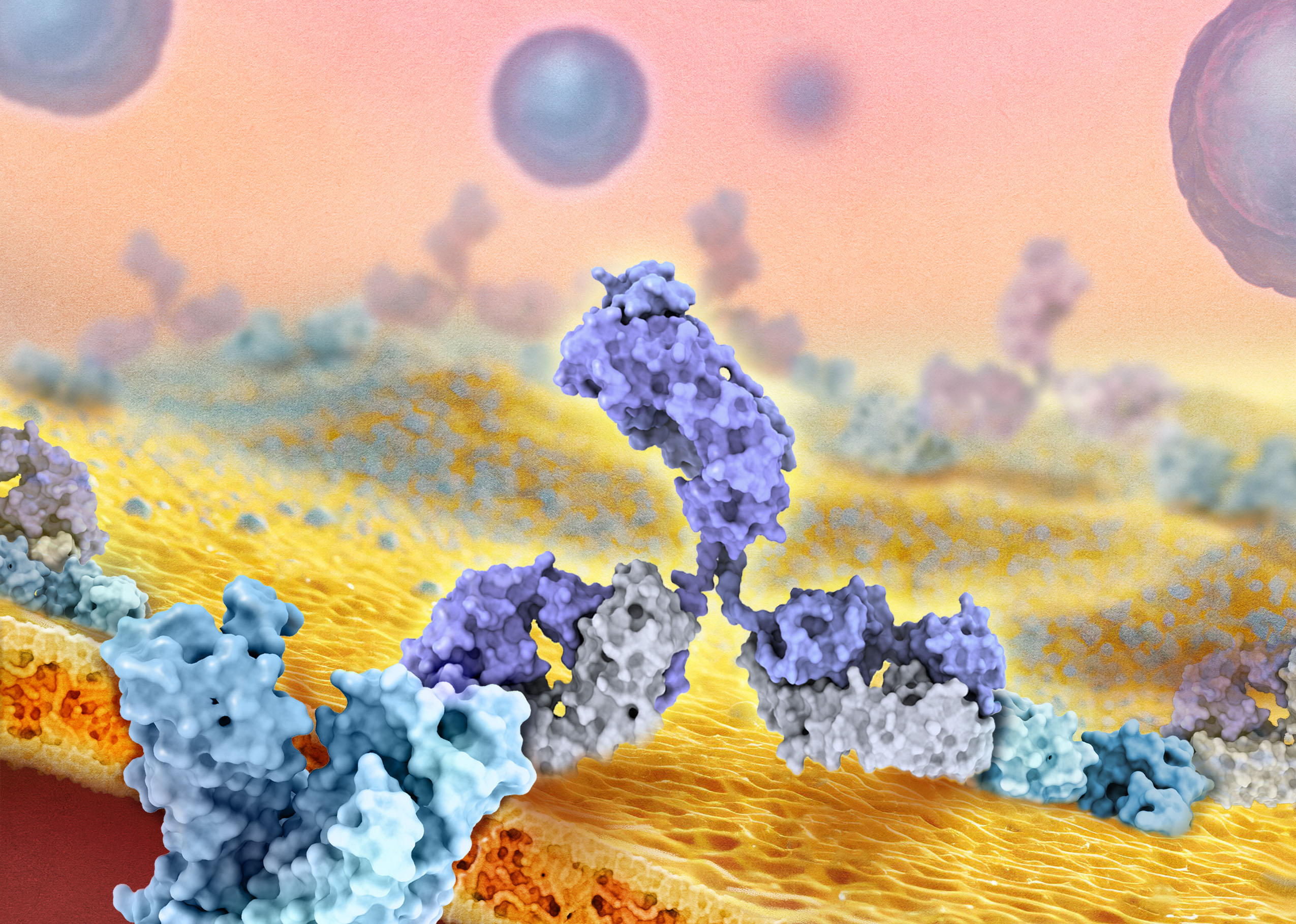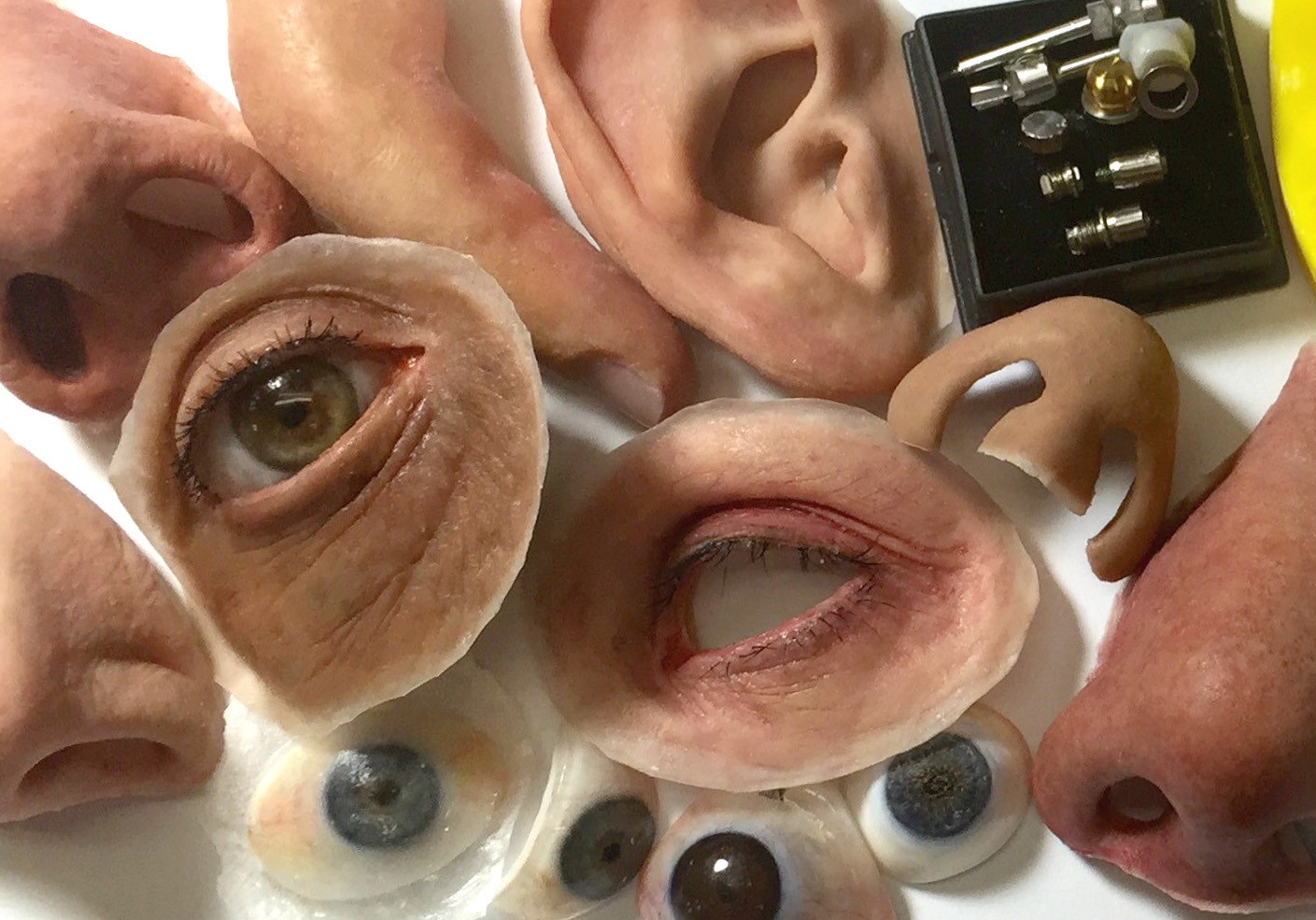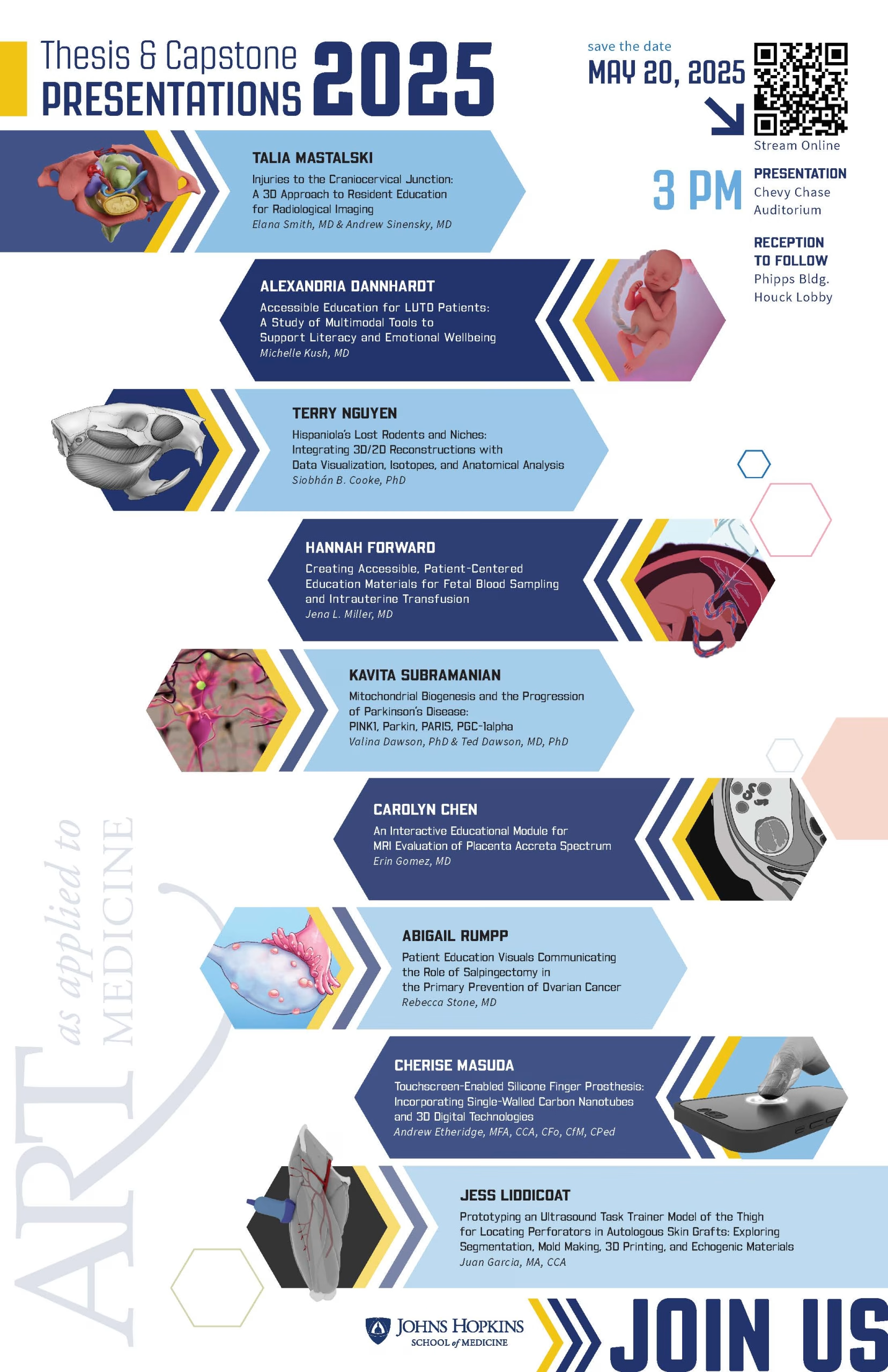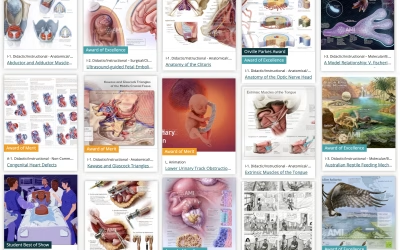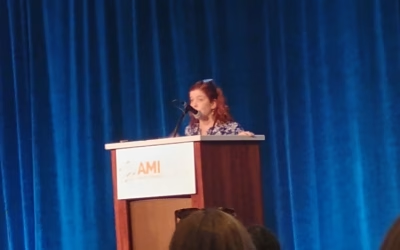Medical & Biological Illustration Graduate Program
Our 2-year MA degree program is dedicated to excellence in the visual communication of science teaching the most up-to-date technologies in the field.
LEARN MORE
Clinical Anaplastology
Graduate Program
Our 2-year MS degree program gives students clinical experience in custom somatic and maxillofacial prosthetics while learning the latest innovations in the field.
LEARN MORE
Production Services
Illustration, animation and video, graphic design, 3D modeling, websites—collaborate with our faculty on your next project. Book a free consultation to explore our fee-for-service options.
LEARN MORE
Prosthetics Clinic
Patients can schedule an appointment and visit our clinic for custom maxillofacial and somatic prosthetics with our Certified Clinical Anaplastologists.
LEARN MORE
The Department of Art as Applied to Medicine is a leader in the field of visual communication for science and health care.
Built on a strong foundation of scientific knowledge, artistic technique, and clear visual communication, we maintain the highest standards of the profession while embracing new medical, scientific, and communication technologies. We are dedicated to training the next generation of medical illustrators and clinical anaplastologists.
Faculty and staff in the department support the visual communication needs of today’s healthcare professionals by creating high quality illustrations, animations, graphic design, interactive media, 3D models and visualizations. Our clinical faculty design and create custom facial, ocular, and somatic prosthetics for patients. The department is the birthplace of professional medical illustration in North America; we preserve 130 years of extraordinary work in our archives of historical and contemporary medical illustration.
Events
Class of 2025 Masters Thesis and Capstone Presentations
The MBI Thesis and CA Capstone Presentations will be in-person and broadcast live on the Department’s YouTube Channel. Our faculty, alumni, and guests will view the latest research in the art of communicating medical and biological science and advancements in the care for people with prosthetics. We welcome input on the content and clarity of the scientific research and the educational and teaching value of the images presented.
22 November 2024
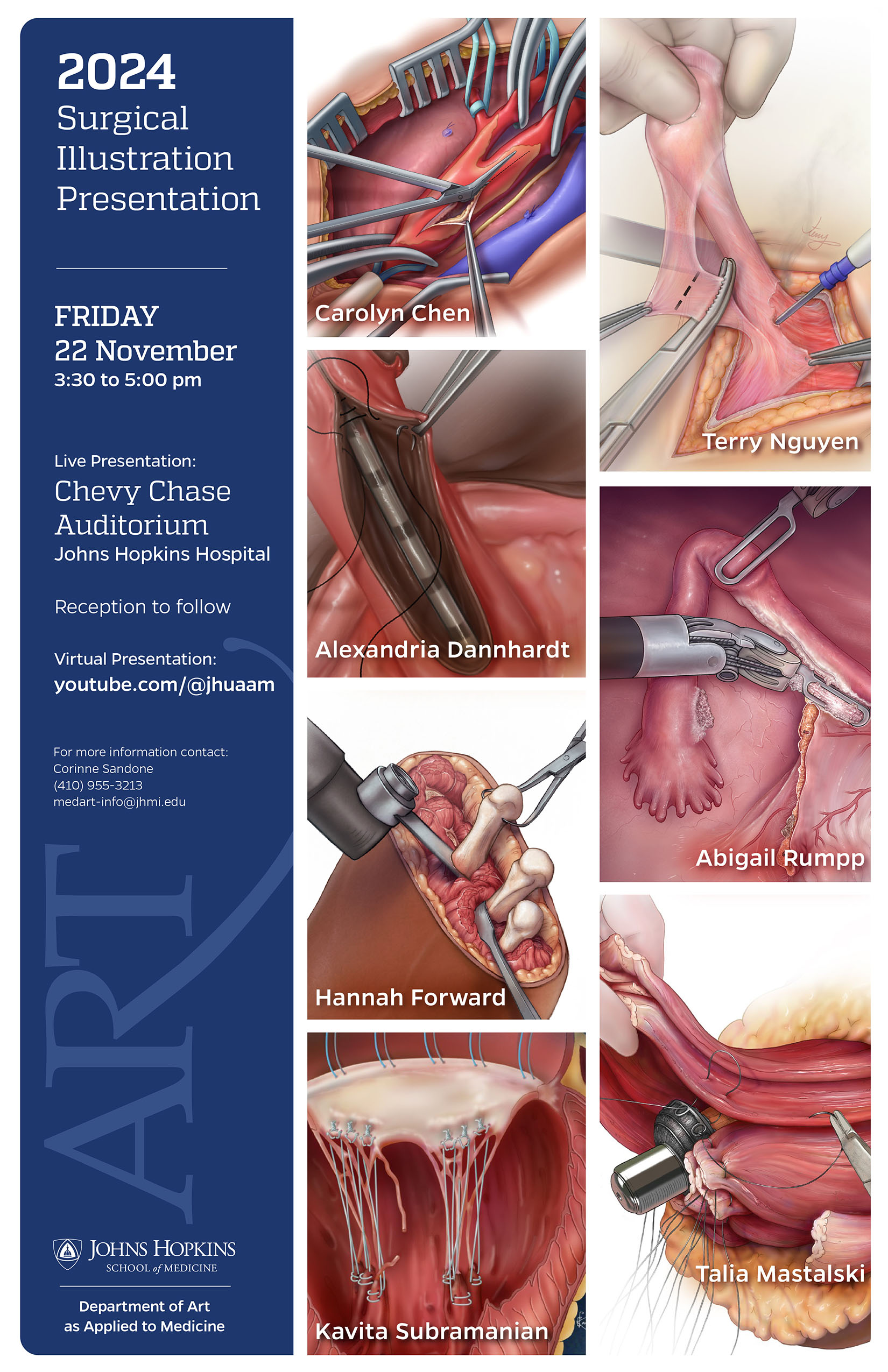
2024 Surgical Illustration Presentation
The Surgical Illustration Presentation for the MBI Class of 2025 will be held Friday, November 22, 2024, from 3:30 to 5:00 pm with both in-person in the Johns Hopkins Hospital Chevy Chase Auditorium and online.
This event will be an opportunity for our faculty and guests to review the Medical and Biological Illustration Class of 2025 student’s surgical illustrations. Fourteen illustrations will be presented.
What is Medical Illustration?
Medical illustration blends expertise in visual communication, science experience and artistry to create clear storytelling for all types of audiences. The work supports education, research, patient care, public relations, and marketing. Medical illustrators serve as visual problem solvers, often conducting research, collaborating with experts, and observing procedures as part of their process. The field is evolving quickly due to advances in science and technology. As discoveries grow, the demand for accurate and effective communication in medical illustration continues to increase.
What is Anaplastology?
Clinical anaplastology is a specialized field focused on the restoration and replacement of facial and body parts lost due to trauma, disease, or congenital conditions. Custom prosthetic devices are created, such as artificial ears, noses, and limbs, using advanced materials that closely mimic the appearance and texture of natural tissue. The process involves detailed assessments, 3D imaging, and close collaboration with medical professionals to ensure optimal results. This not only enhances physical appearance but also improves patients’ psychological well-being and quality of life.
Latest News
Visit our news section for the latest updates on departmental and graduate program events, faculty and student awards, publications and other happenings.
Congratulations to 2025 AMI Salon Awardees
Congratulations to Hopkins students, faculty and alumni were recognized for their outstanding work in the 2025 AMI Salon.
Jennifer Fairman Begins her term as President of the AMI
Associate Professor Jennifer Fairman began her term as President of the AMI. Here are some words she shared during the Passing of the Gavel…
Gary Lees Memorial At AMI 2025
Please join us on July 18, 2025 for a Memorial Event for Gary Lees at 2025 AMI conference.

